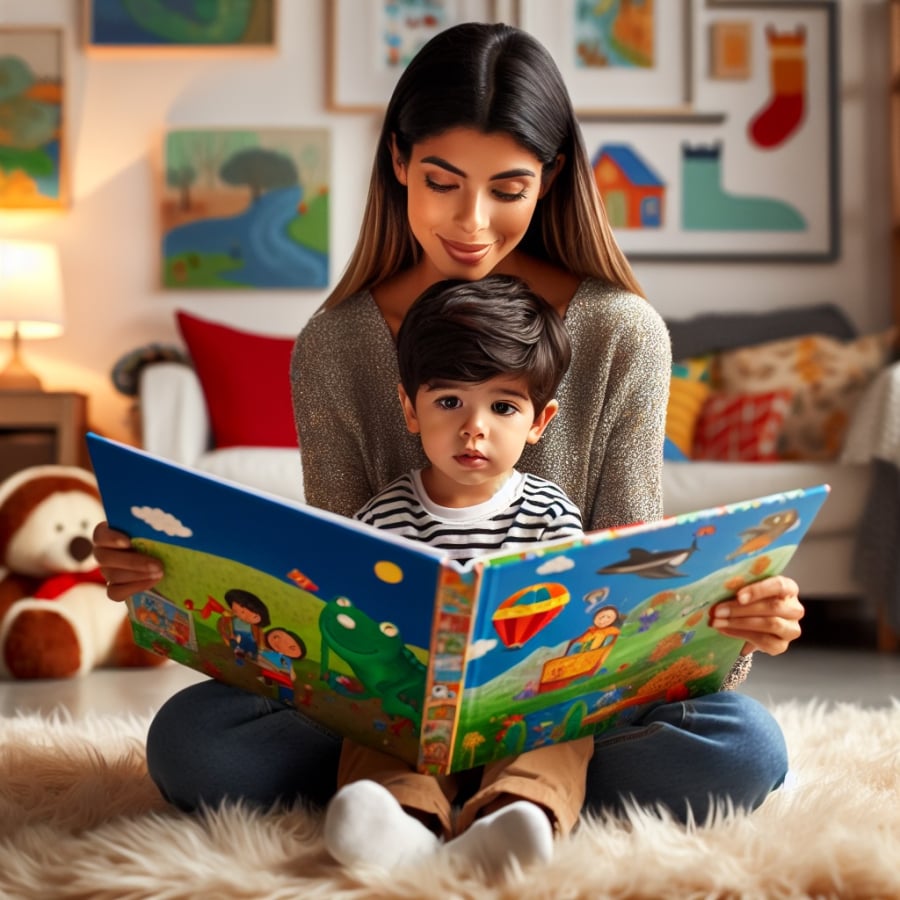The results of research from the OECD international organization show that “A love of reading is the most significant indicator of a child’s future success, regardless of whether the child is born into a wealthy family or not.” Most successful people have the habit of reading books. If parents want their children to love reading, they can follow the steps below.
Read aloud to the child
– During pregnancy and the first year of the child: Parents read a meaningful short story (50-100 words) every day as a form of conversation after changing diapers or playing with the child.
– Children aged 1-3: Parents focus on reading the parts that the child enjoys or asks questions about.
– Children aged 3-6: In addition to focusing on reading the parts that the child is interested in, parents can also read with the child a few interesting passages and encourage the child to read them out loud.
– Children aged 6-10: Parents encourage the child to read out loud a story with fewer than 200 words and summarize the story afterwards.

Create a dedicated space for reading
– During pregnancy and the first year of the child: Make use of the parents’ reading space. A child who listens to reading while still in the mother’s womb will soon develop their own concept of a “reading space” in the future.
– Children aged 1-3: Parents create a small bookshelf and regularly place the books that the child enjoys and the ones that parents often read on it.
– Children aged 3-6: Create two spaces on the shelf, one for the children’s books that the child often reads and one for new books that the child can choose or hasn’t shown interest in yet.
– Children aged 6-10: Parents encourage the child to organize books by genre and arrange the books accordingly.

Let the child choose their own books
– During pregnancy and the first year of the child: Parents can choose the books they like but encourage topics related to life and meaningful stories.
– Children aged 1-3: Parents help the child choose books, focusing on topics related to daily activities in life.
– Children aged 3-6: Parents encourage the child to choose books, ask why they chose a particular book, and discuss it when reading the new book.
– Children aged 6-10: Parents should clearly define the types of books the child needs to read each month. For example, reading at least two genres per month and comics only count as one genre. The child needs to choose another genre to read.

Interact with the child while reading
– Children under 6 years old: Reading books is a positive communication time between parents and children. The important thing is not to finish reading the entire content of the book, but whether the child is interested in a particular point in the book while reading, whether they repeat it, and ask about it. At this stage, reading books is like a game, and parents are the players with the child.
– Children aged 6-10: In addition to positive communication during reading, such as asking questions, answering them, and having discussions, children need to understand that reading books is an important tool for gaining knowledge and developing critical thinking. This can be done by guiding the child to research common knowledge, answer a question, and develop the skills of looking up information from books and the internet.
Set a specific time for reading, regularly every day
Reading should be done regularly, at a fixed time every day. Parents should not do it on a whim or based on impulse. Turning reading into a daily routine will help children develop the habit of reading. This is the first step in developing a love for books in a child’s brain.
Mothers’ Need for Awareness of Dual Activity of Breastfeeding and Watching TV
In the contemporary world, in which technology pervades our lives, some mothers tend to soothe their babies through nursing while simultaneously watching television. Although this practice may not appear to affect the infant, studies show that it can in fact have dire repercussions on the baby’s well-being, both in terms of physical health and mental growth. In this article, we will look at the possible reasons for this activity and its potential outcomes.



































